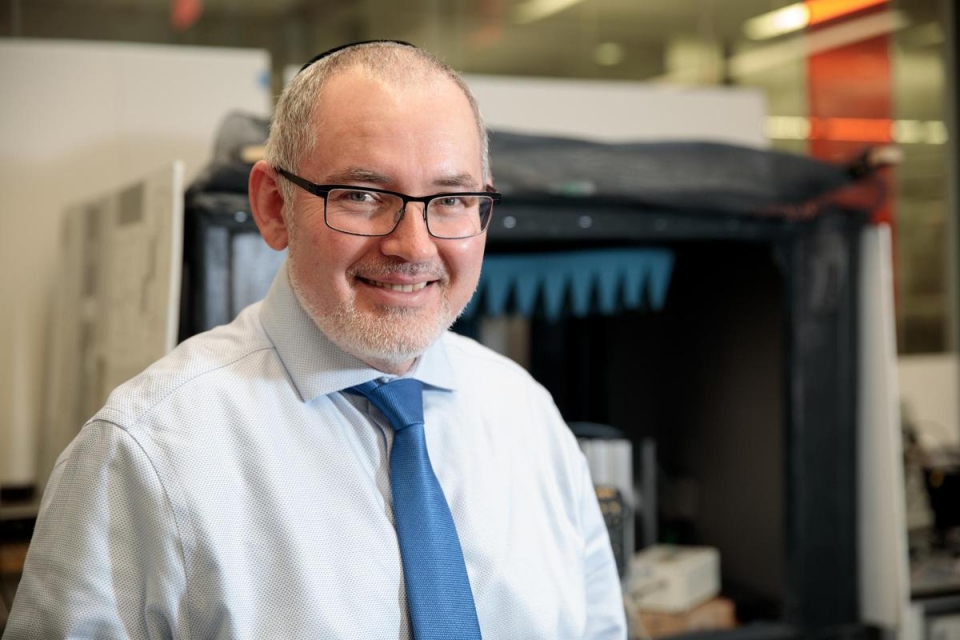Satellites are used for diverse purposes, from weather forecasting and the Global Positioning System to internet communications and national security. Thus, making them more efficient and affordable is a priority for many researchers studying propulsion, including the A. James Clark Professor in Engineering, Dr. Michael Keidar.
Very low-Earth orbit (VLEO) and altitudes below VLEO, which is lower than 100 kilometers, are considered the next frontier for satellite operations due to their ability to provide better imaging, produce less pollution, and prevent the formation of space debris. With optical payloads, reducing the operating altitude increases the resolution by the same percentage or allows for reduced aperture size. Additionally, the revisit time to target Earth positions is reduced, and the signal-to-noise ratio and latency are improved for communications.
Thanks to Keidar, his Ph.D. student Anmol Taploo, and members of his Micropropulsion and Nanotechnology Laboratory, operations in these novel altitude regimes may soon be a possibility as the next revolution in propulsion technology takes off: Air-Breathing Plasma Thrusters (ABPT). They have been researching ABPTs to overcome the existing challenges in plasma engines, and with the help of a $1M award from the Defense Advanced Research Projects Agency (DARPA), they will continue their work towards making operations in these novel altitudes a reality in the project “Self-Neutralizing Air-Breathing Scramjet-type Plasma Thruster.” In this project, Keidar will also collaborate with researchers from the Princeton Plasma Physics Laboratory.
“In addition to payload benefits, these altitudes are uncrowded, provide fast orbit decay to maintain the environment, resilience from difficult-to-propagate orbit dynamics, and provide the propellant, air, for air-breathing propulsion options,” said Keidar.
Typically, non-air-breathing plasma engines work within a vacuum setting and are constrained by the size of their propellant tanks. In contrast, ABPTs utilize the thin atmosphere as its propellant source, eliminating the need for a propellant tank. It does so by turning the air into plasma, which is a state of matter where gas atoms and molecules lose electrons, producing a “cocktail” of positively and negatively charged ions. The ABPT ionizes the air as it comes in the engine to create that “cocktail” and turn it into plasma. It then propels those particles using electric and magnetic fields to produce thrust.
The challenge researchers are grappling with is how to produce and expel the plasma away from the thruster so that equal numbers of ions and electrons are accelerated downstream from the spacecraft. Achieving this is important as it allows the ions and electrons to self-neutralize, meaning they combine back into air atoms and molecules.
“In this DARPA-supported project, we will develop a unique concept for ionization and acceleration without slowing incoming air and extracting both positive and negative ions,” Keidar stated.
In their preliminary research on this issue, Keidar and Taploo developed a novel way of generating plasma using a device called Circular Arc Electron Source (CAES) for a scramjet inlet type self-neutralizing ABPT (SABPT). The SABPT consists of an electron source and acceleration region, which comprises an appropriate arrangement of magnets and two electrodes. The source generates plasma as airflow enters the thruster, and the magnetic field accelerates the plasma particles downstream, producing thrust and later self-neutralizing.
At the 2023 Meeting of the American Physical Society’s Division of Plasma Physics, Taploo was chosen to present their findings on the radial magnetized arc electron source that proved its efficacy in ionizing airflow. The novelty of the SABPT, however, lies in the two electrodes at the end that serve as a “self-healing” material and achieve self-neutralization of the particles without using an external neutralizer. The ability of the material to conduct electricity does not vary over time, making it ideal for extended satellite missions.
Just as reusable rockets have made space flight cheaper and more accessible, self-neutralizing, air-breathing plasma thrusters will make platforms at 70 to 90 kilometers available for various applications. This could provide a leading-edge electric hypersonic advantage for the United States, bolstering capabilities for satellite maneuvering, defense, national security, and reconnaissance missions. Through this new thruster technology, Keidar is tackling both challenges of size and self-neutralization to make operations in these novel altitude regimes a reality.


